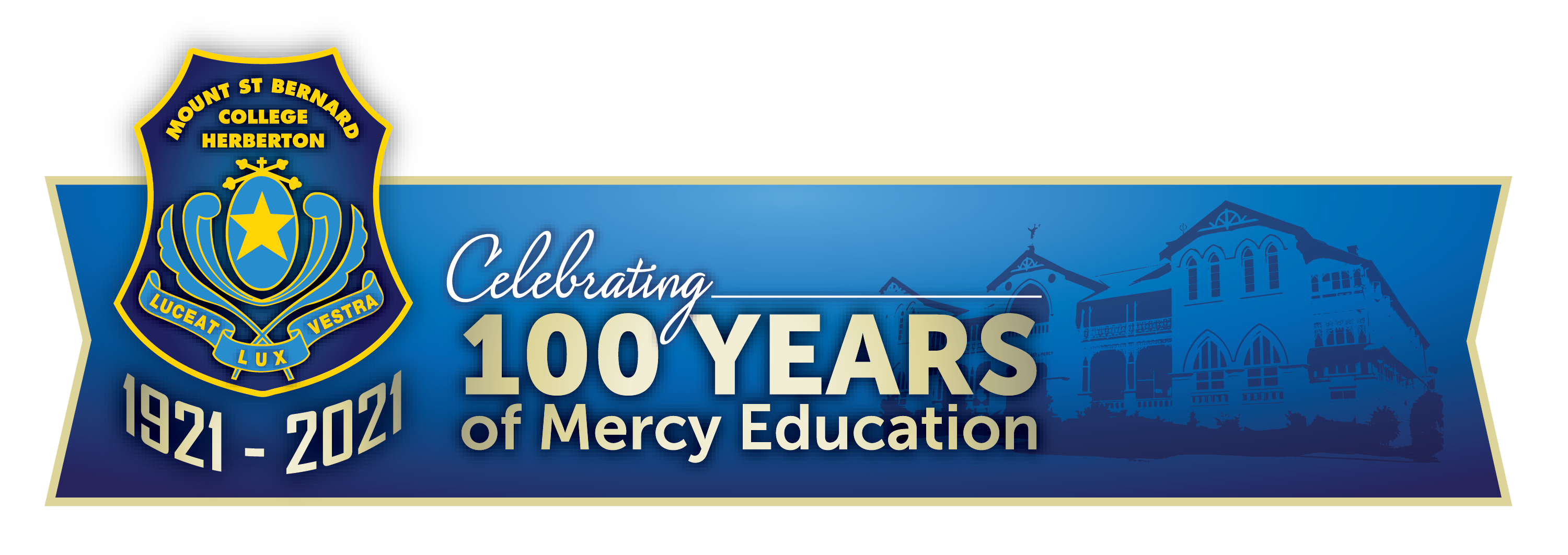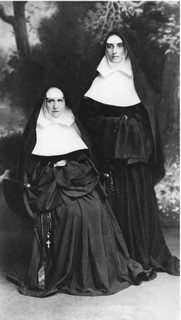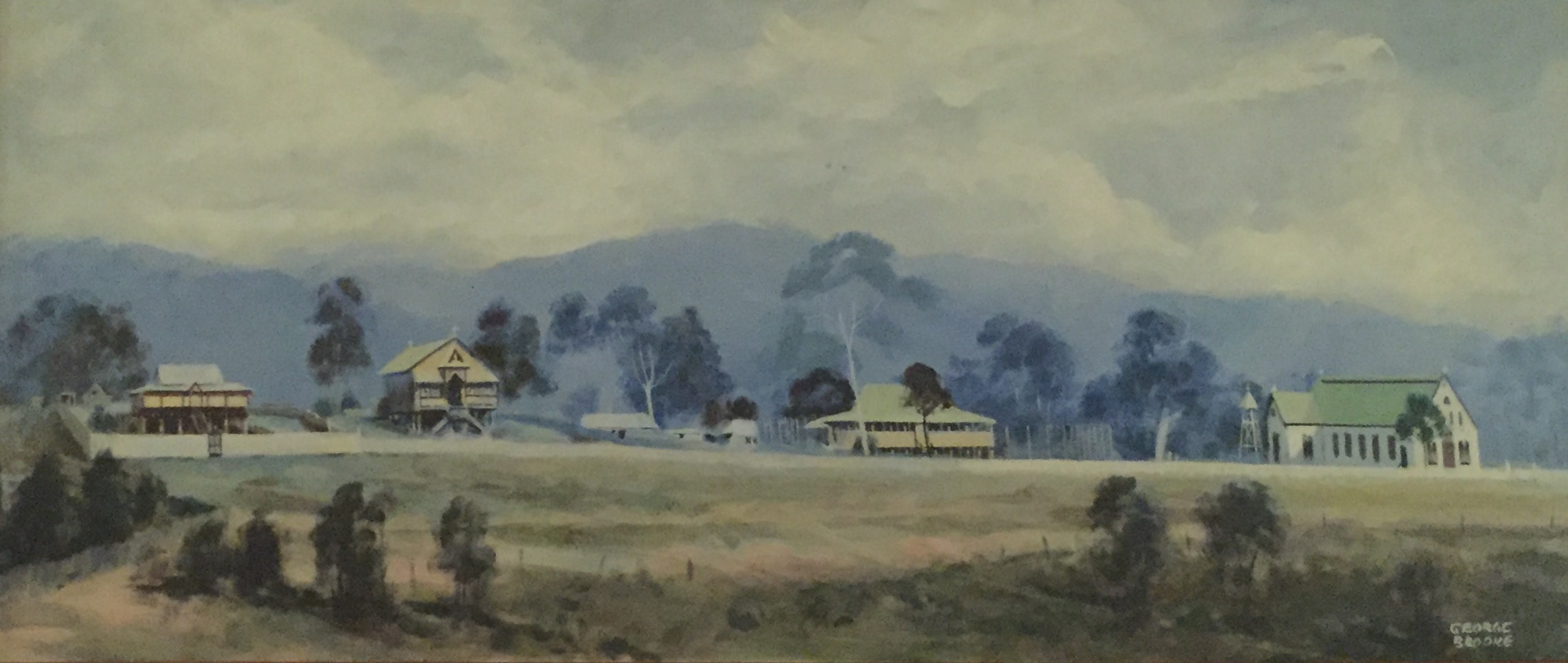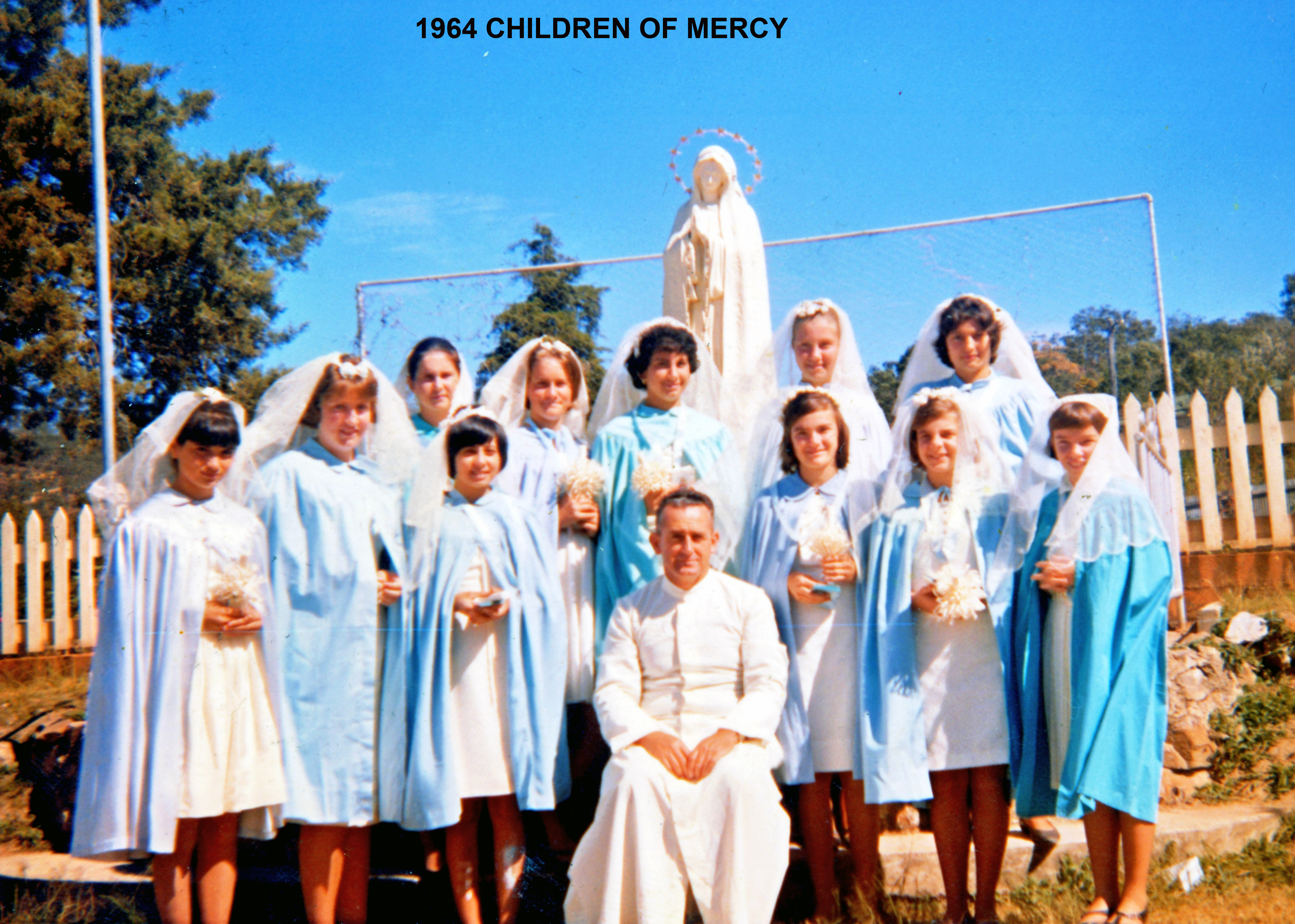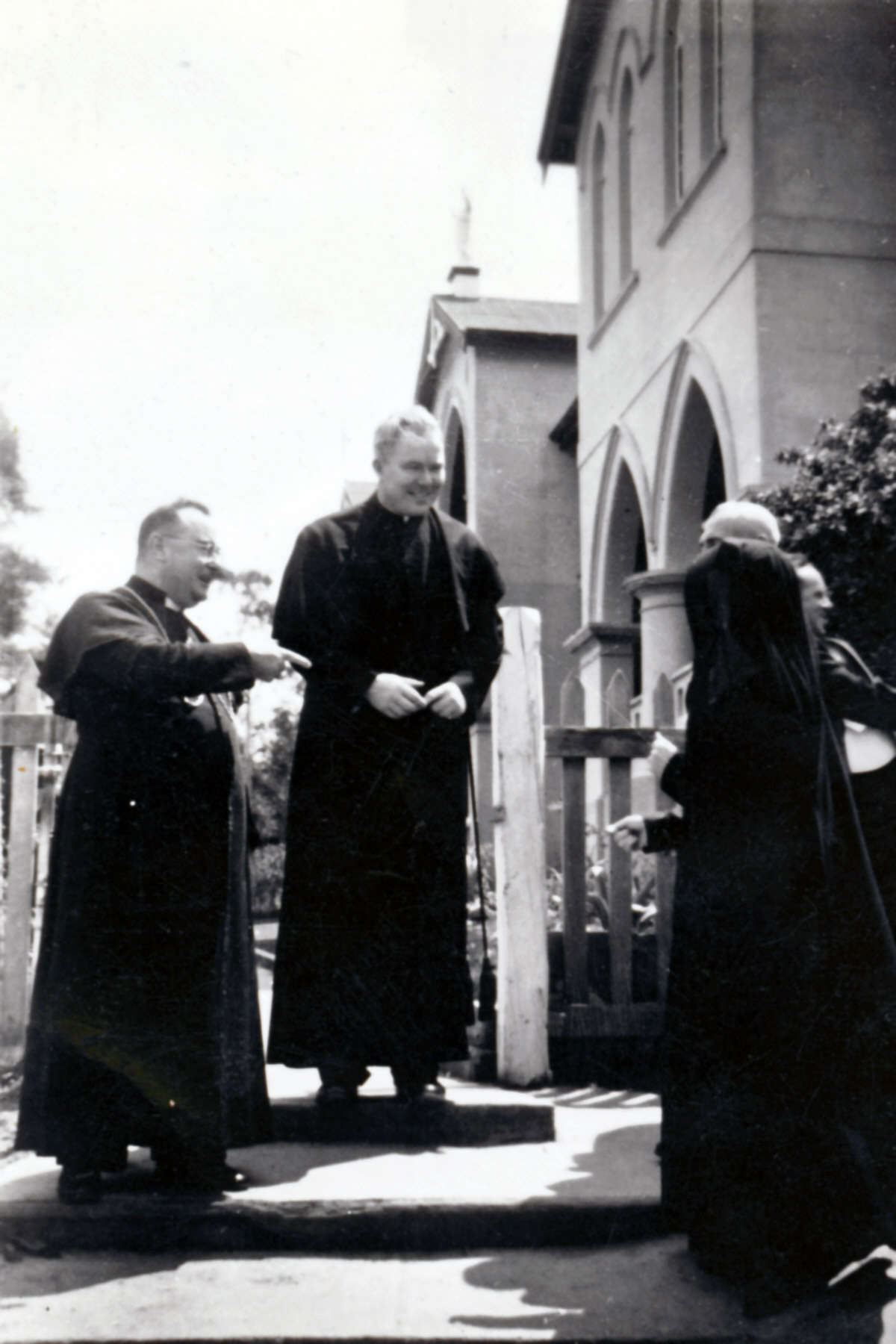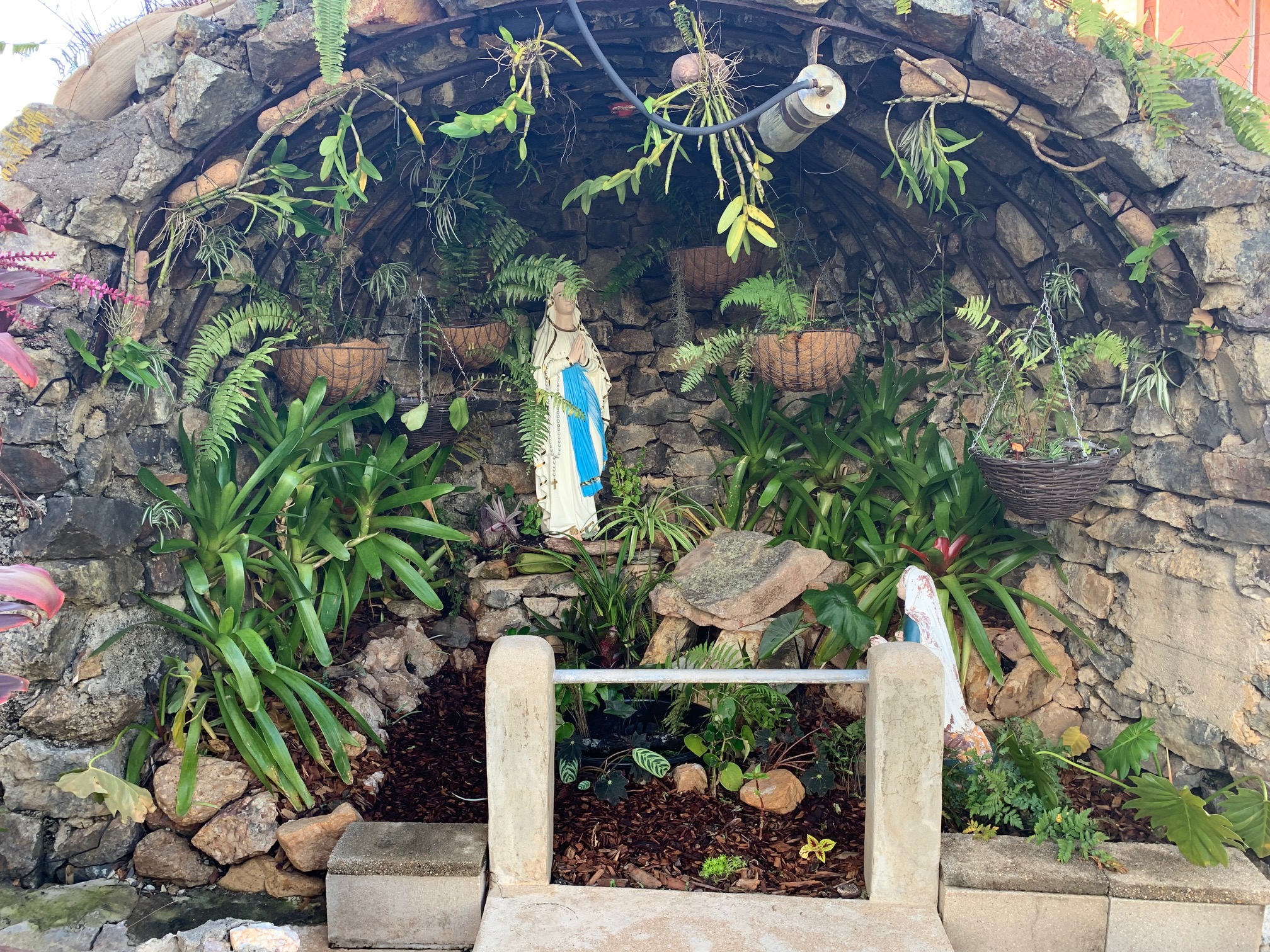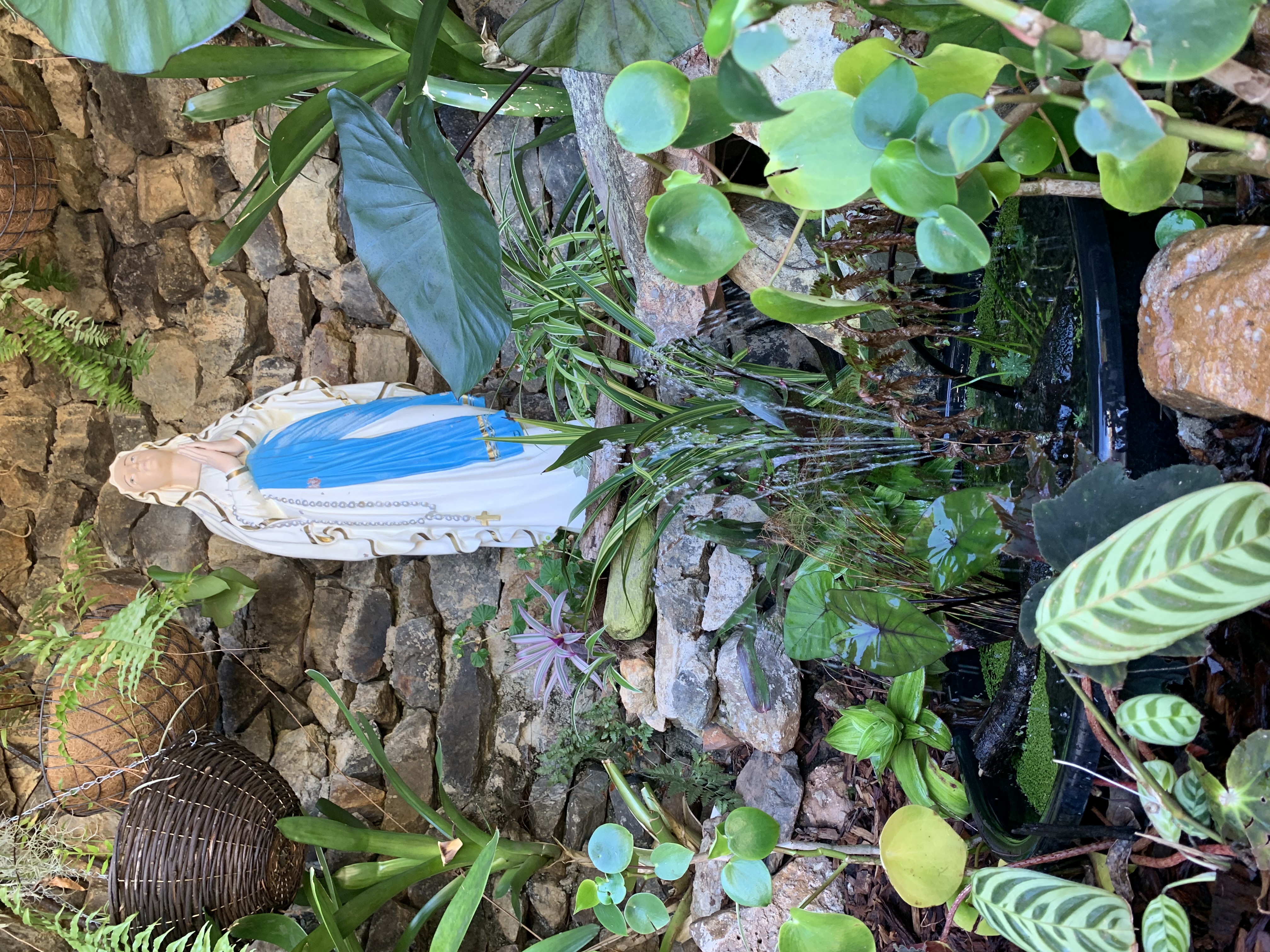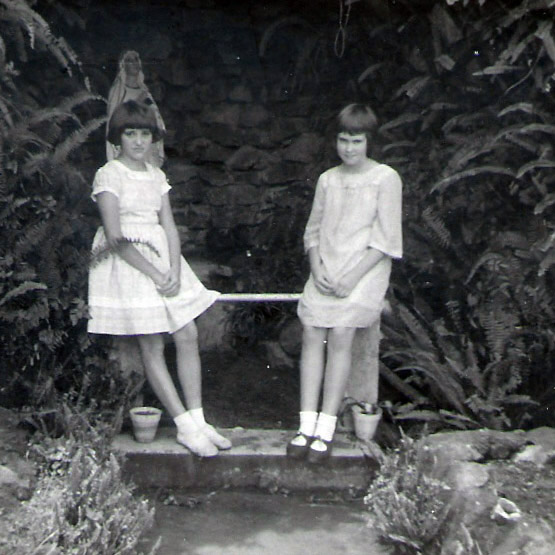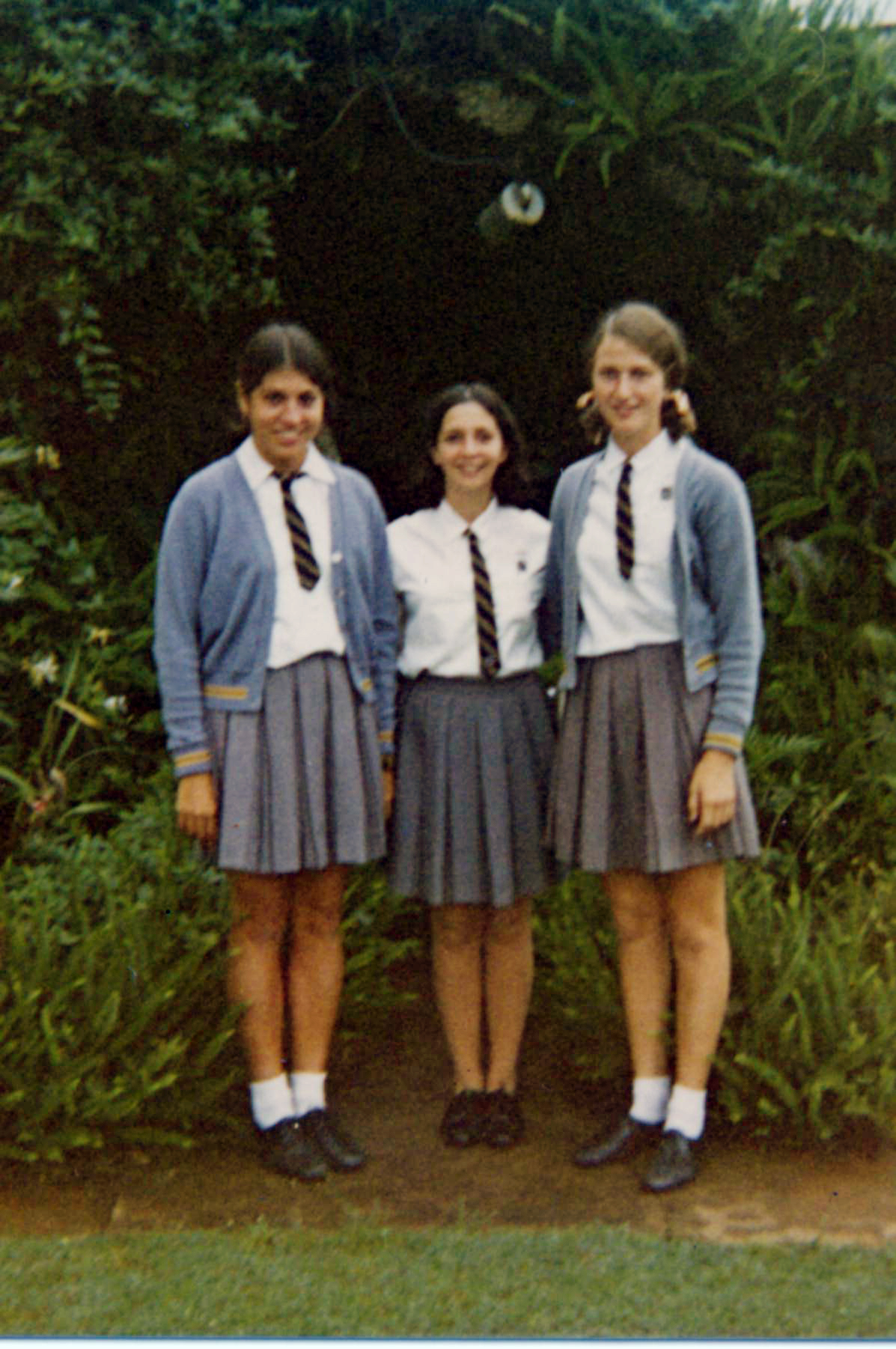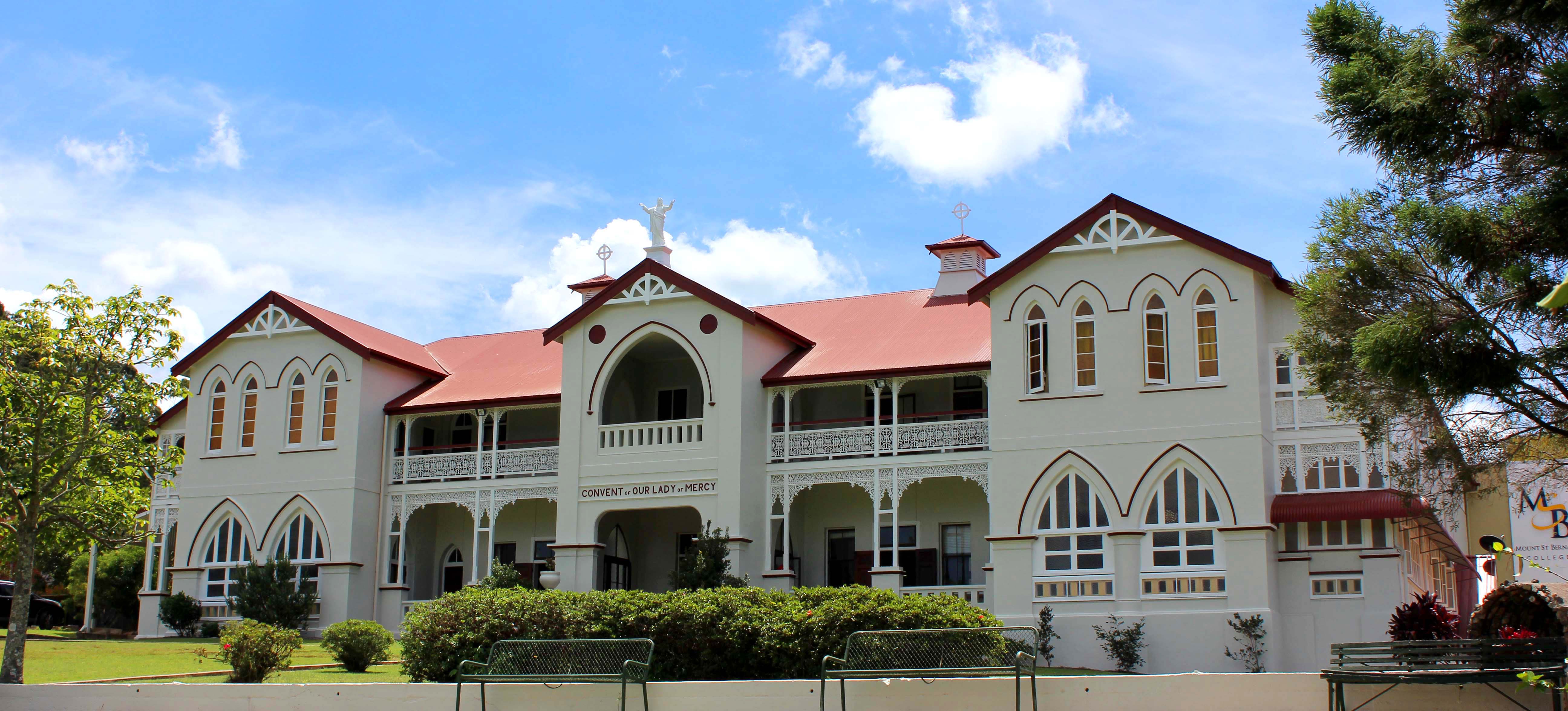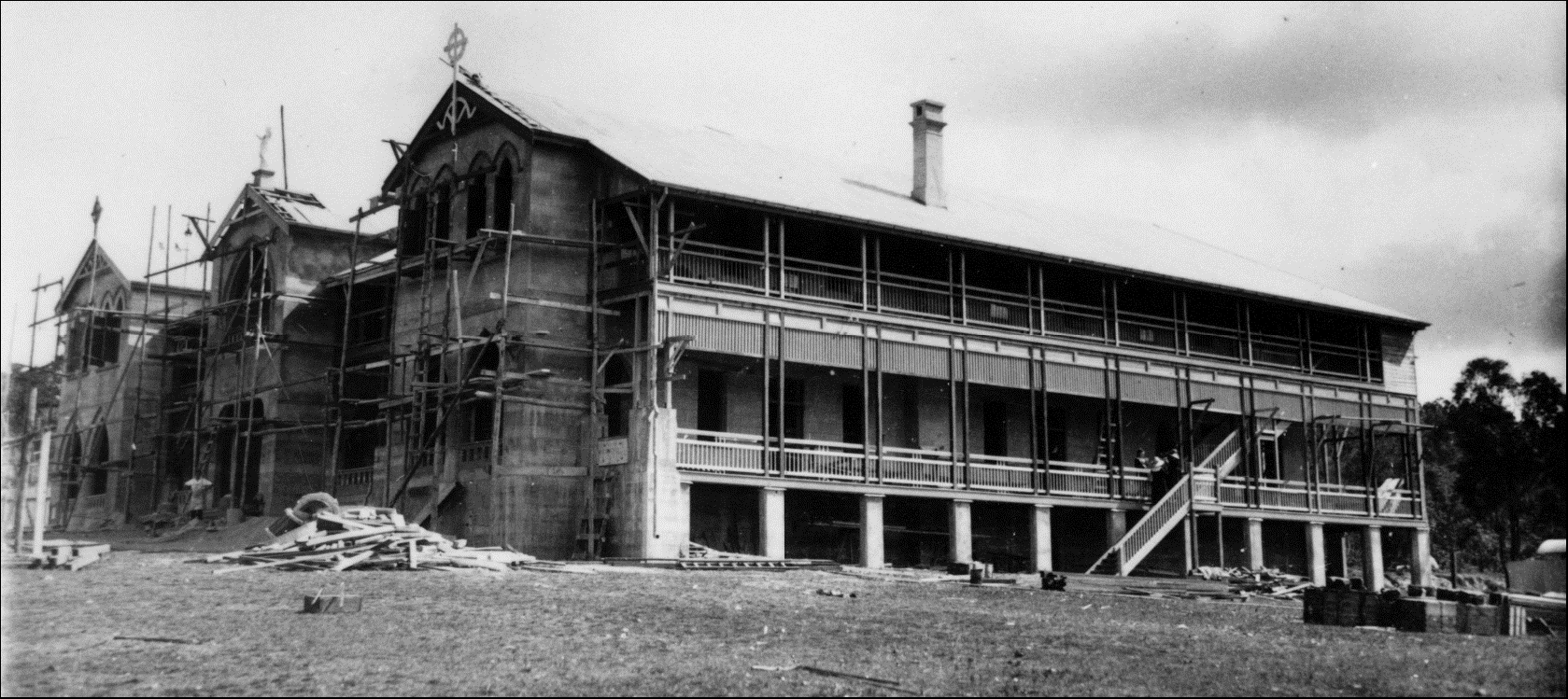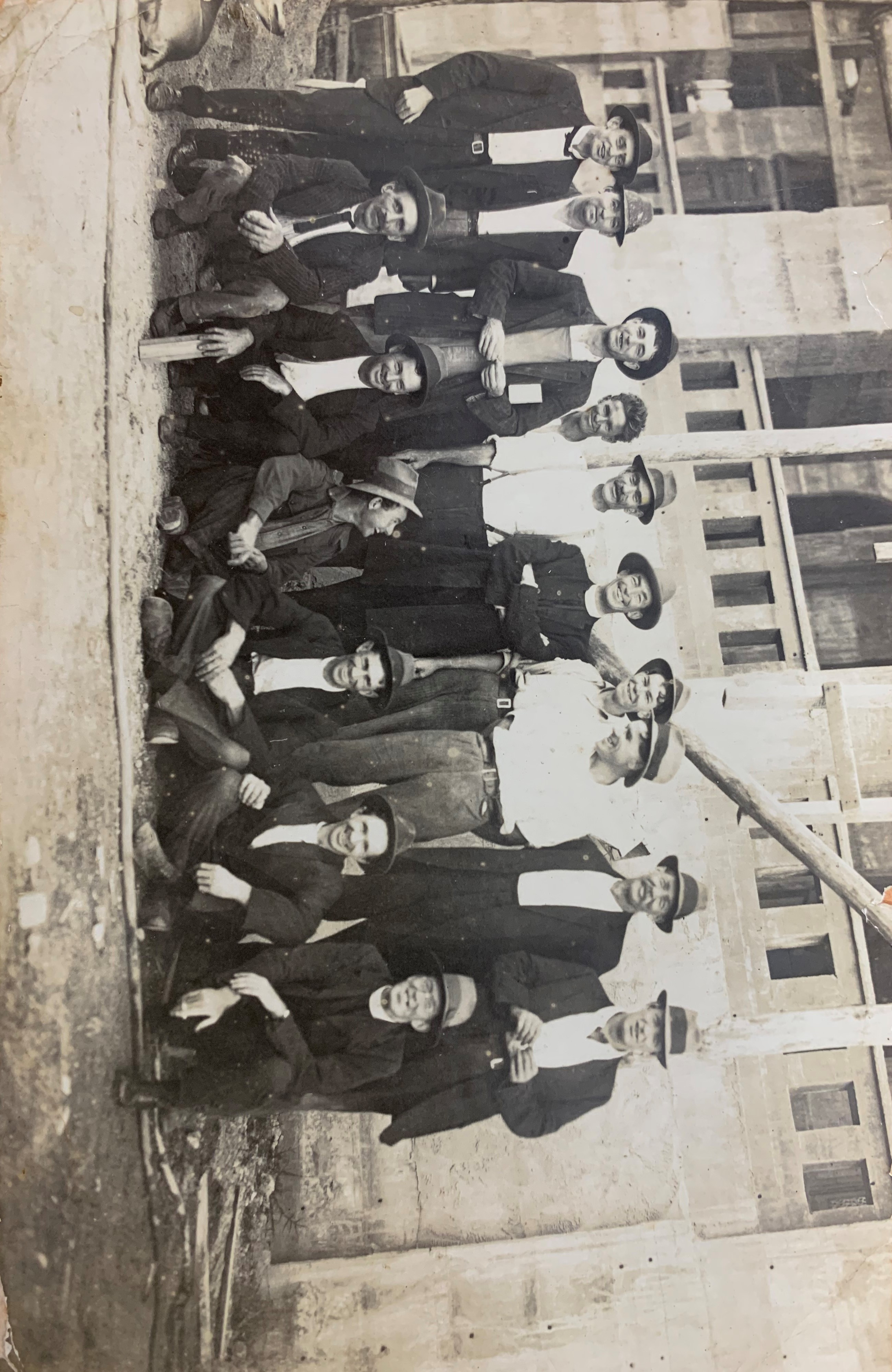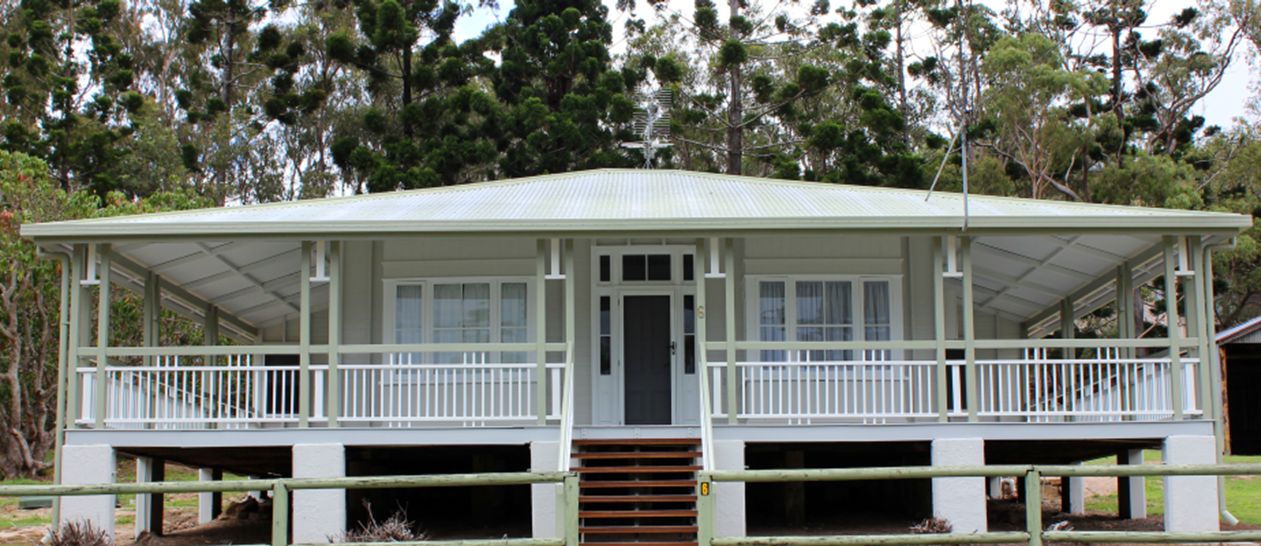Mount St. Bernard College
Mercy Heritage Trail
Starting where the dream began over 100 years ago, the Mercy Heritage Trail guides you along a path of sites and buildings central to the Mercy story at MSB.
If you walk the Heritage Trail, interpretive signs along the way and a printed guide will guide you and share some of the story for each part of the Heritage Trail.
Scroll below for a digital tour of the Mercy Heritage Trail, including historic and current images and stories about each stop along the Heritage Trail.
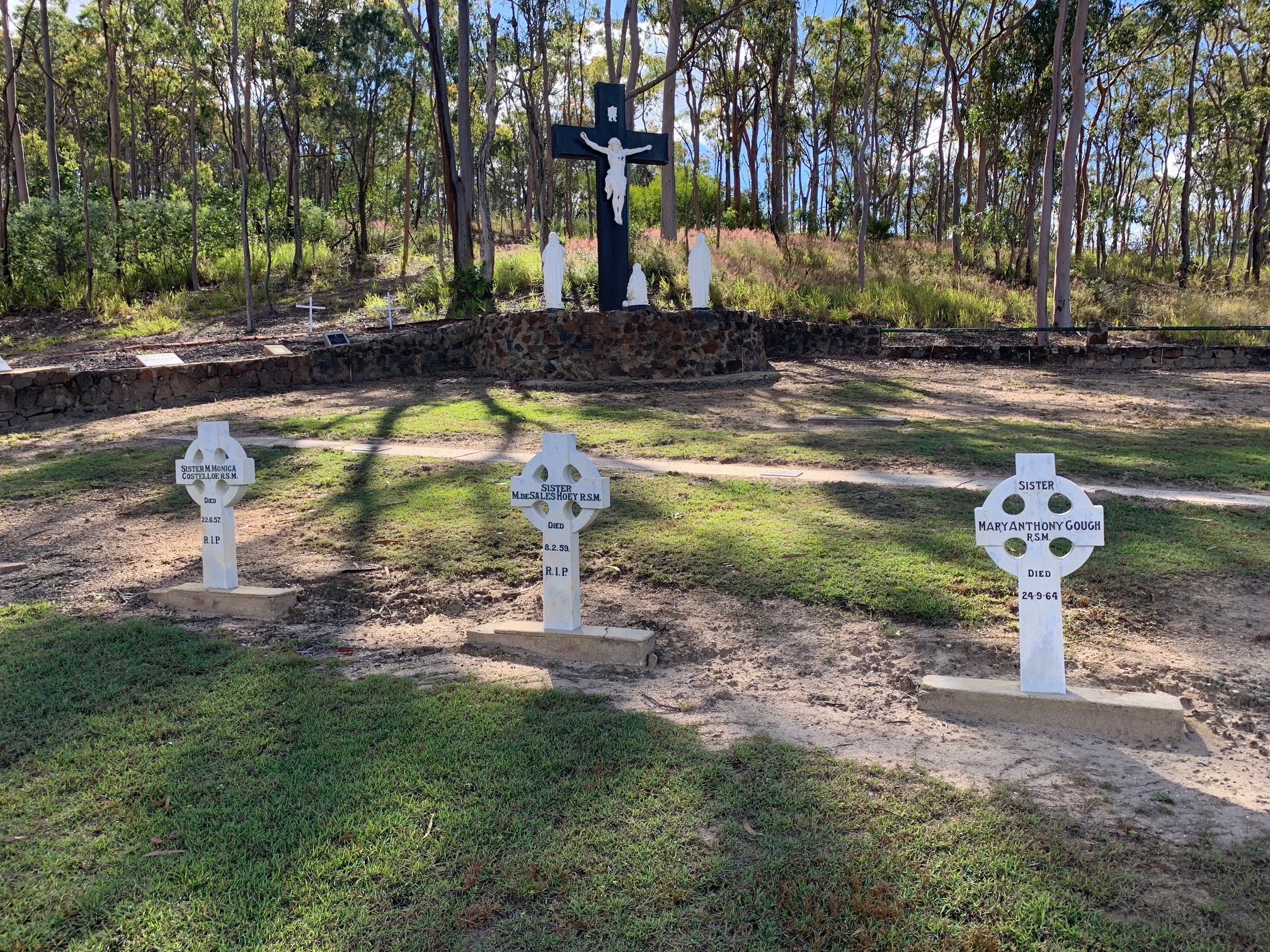
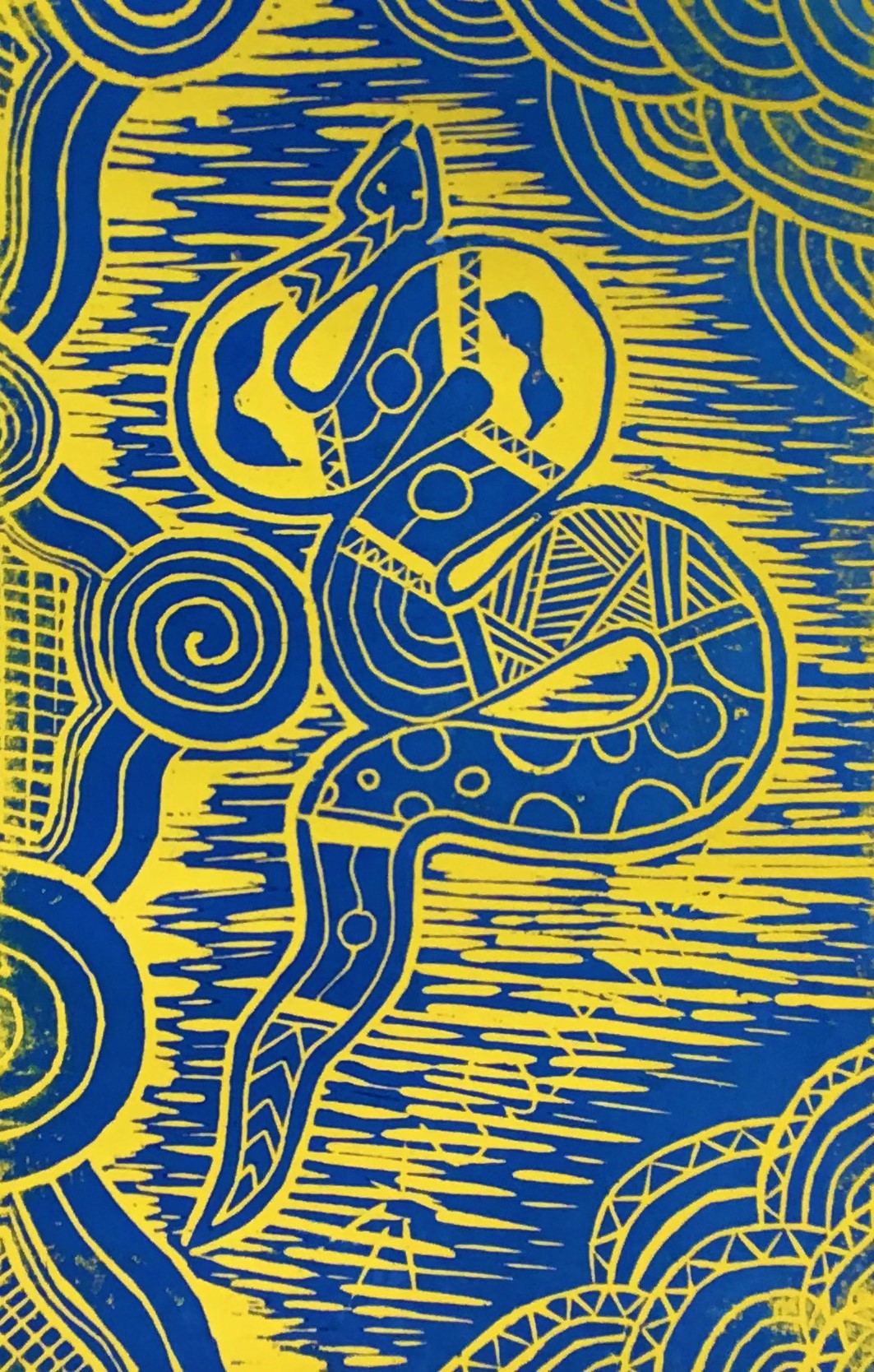
1. Jirrbal Country
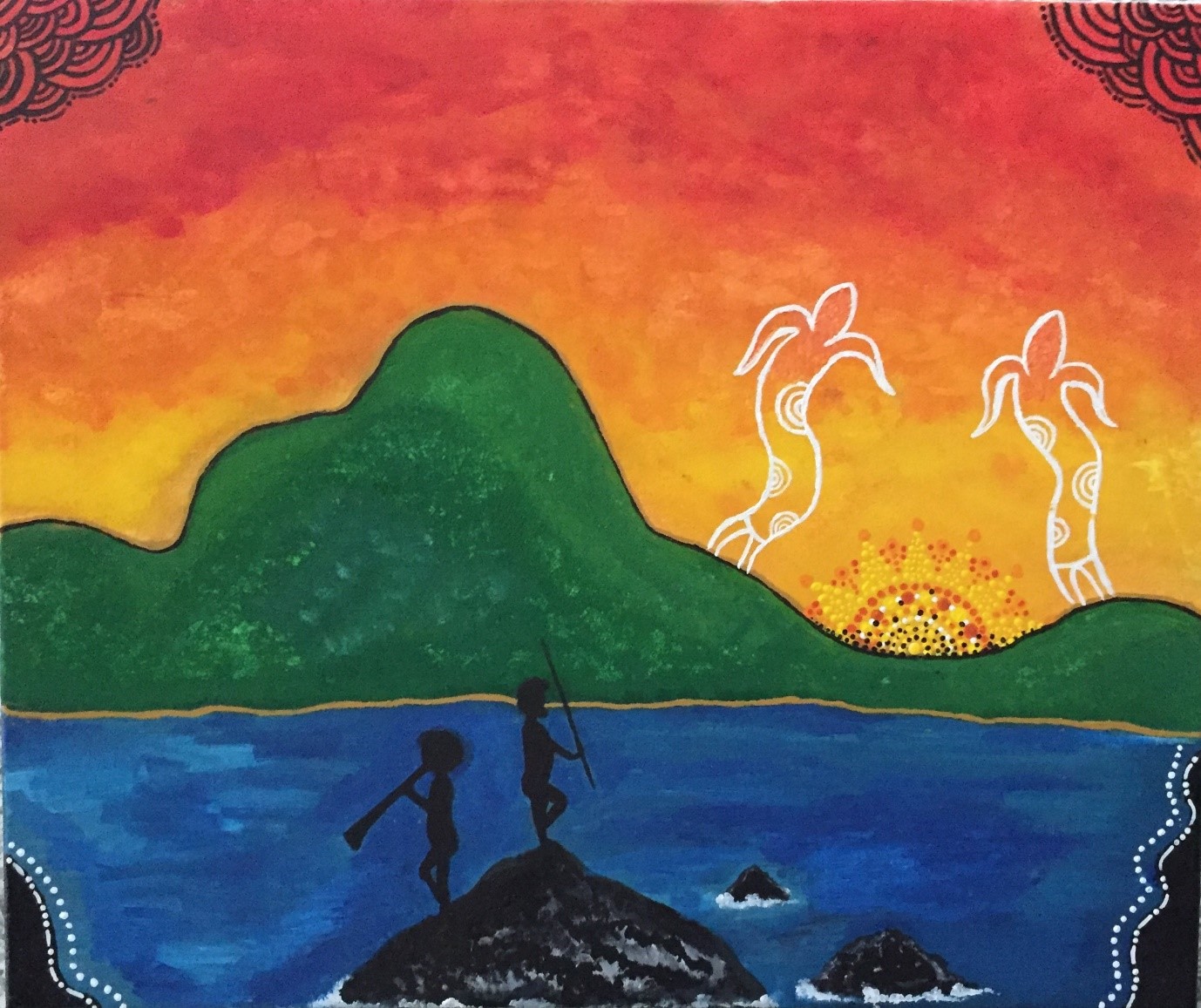
Still Connected (2020) by Jirrbal artist and student of MSB Kathy Richardson, painted on Jirrbal Country (Herberton, Queensland, Australia).

Built in 1889.
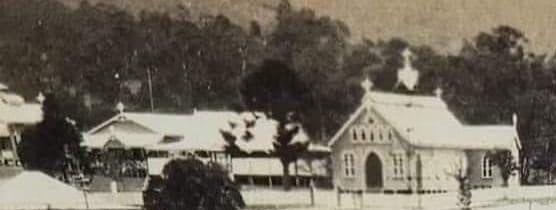 St. Patrick's Church ca. 1921.
St. Patrick's Church ca. 1921.2. St. Patrick's Parish Church
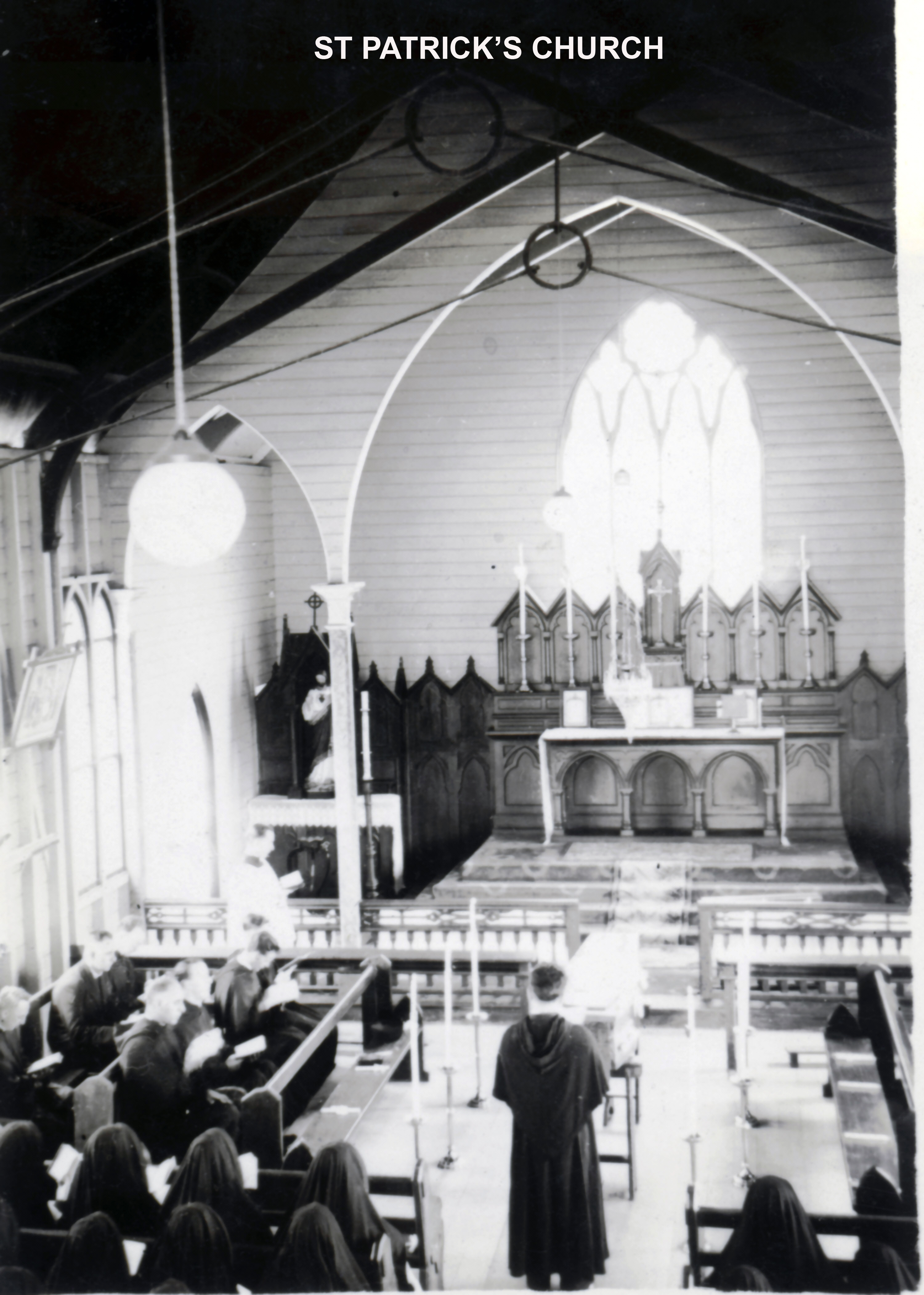 St. Patrick's Church ca. 1950s.
St. Patrick's Church ca. 1950s.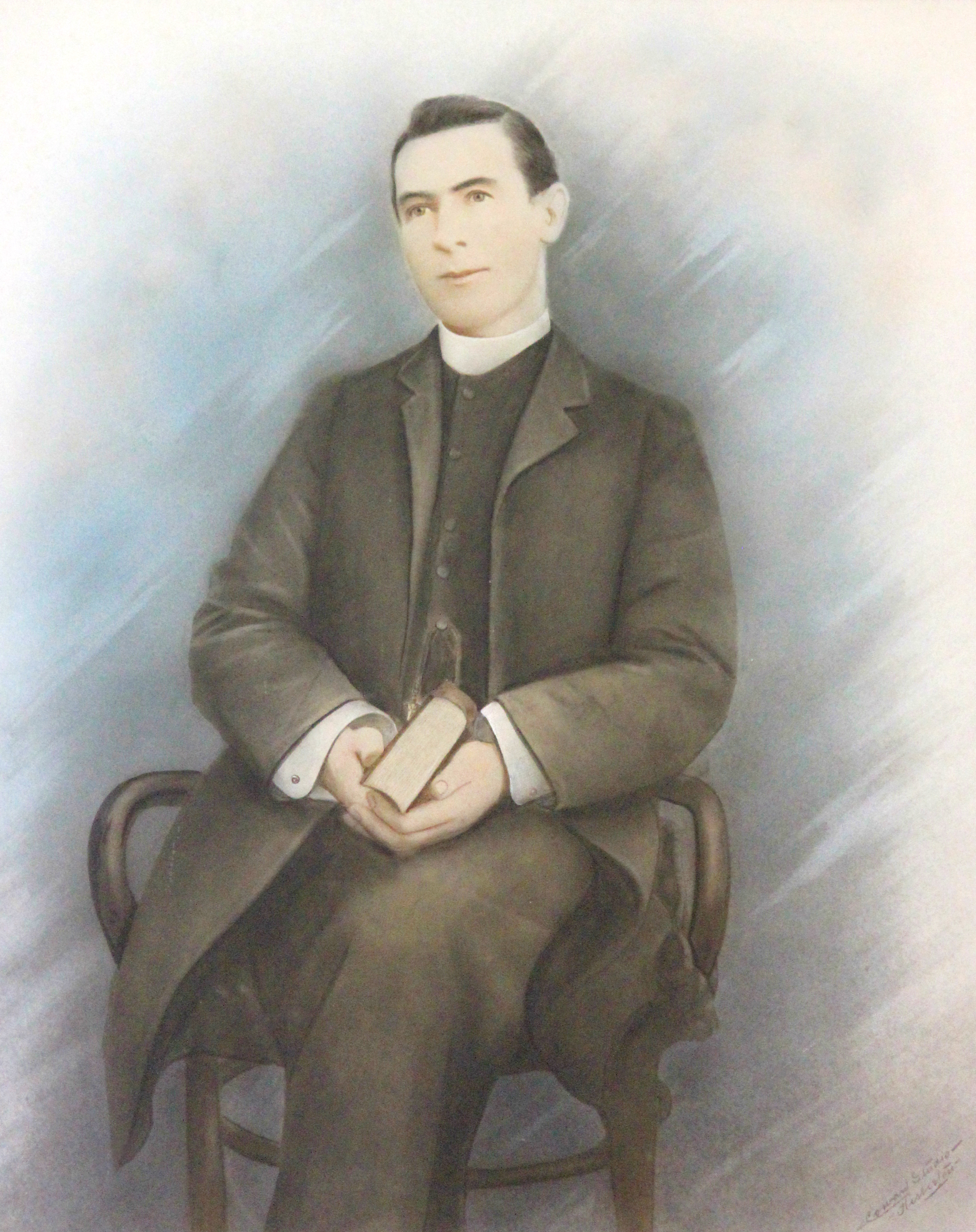 Fr. (Patrick) Bernard Doyle OSA: Parish Priest of Herberton 1906-1924; visionary for Mount St. Bernard College.
Fr. (Patrick) Bernard Doyle OSA: Parish Priest of Herberton 1906-1924; visionary for Mount St. Bernard College.The Dream Begins...
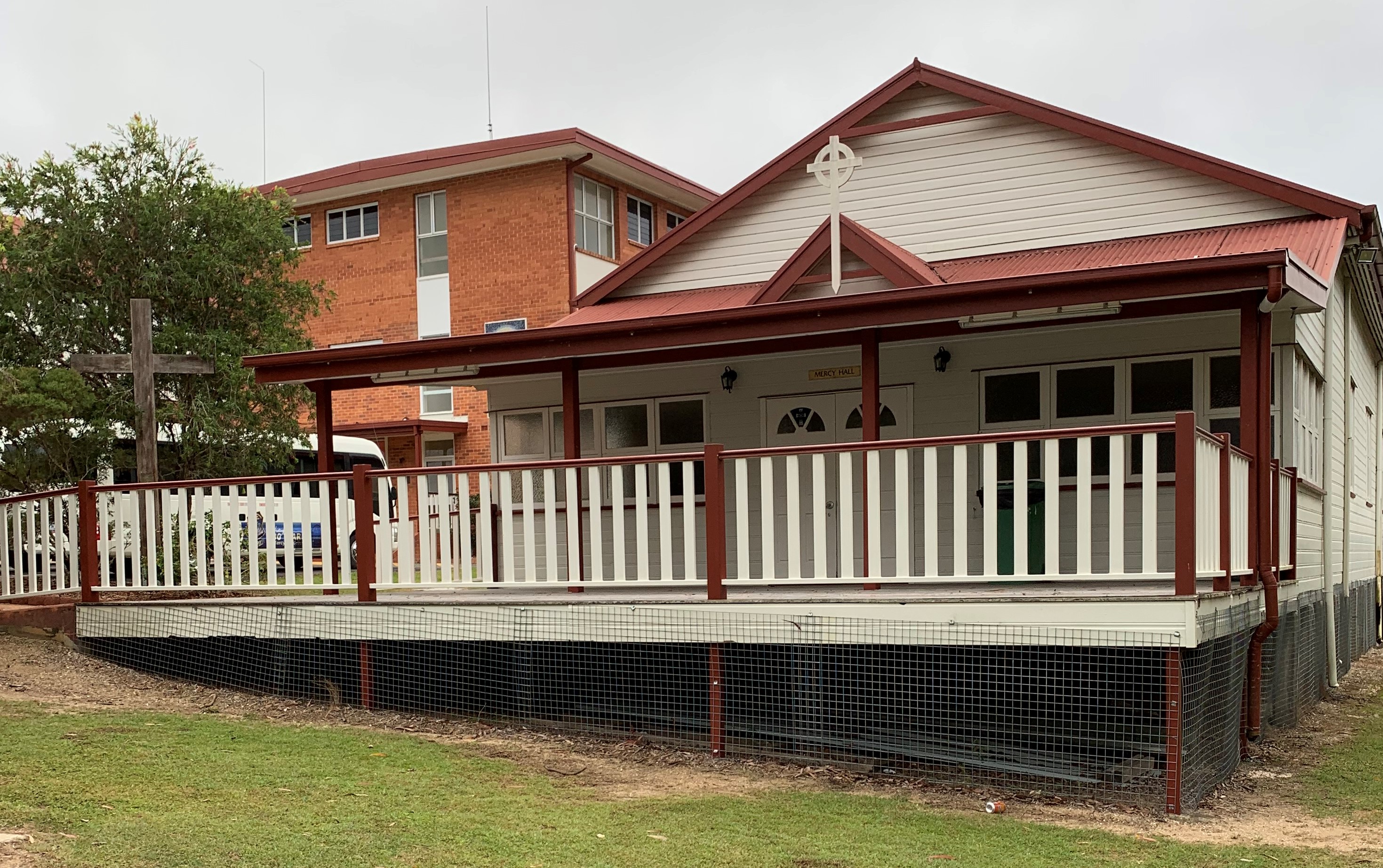 Mercy Hall today.
Mercy Hall today.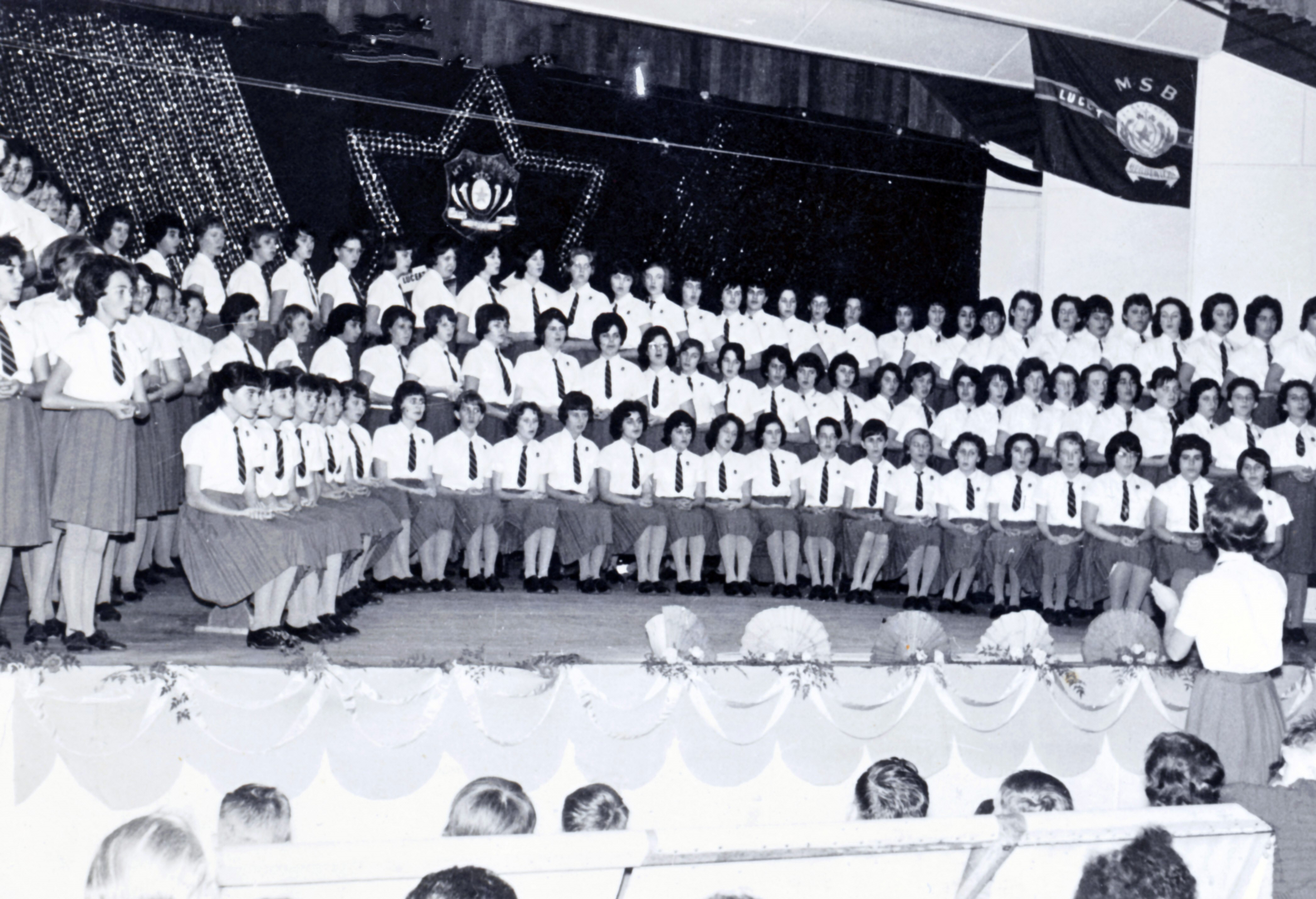 Concert Hall: Speech night, 1965
Concert Hall: Speech night, 1965
3. Mercy Hall (also known as 'The Hall' and 'The Concert Hall')
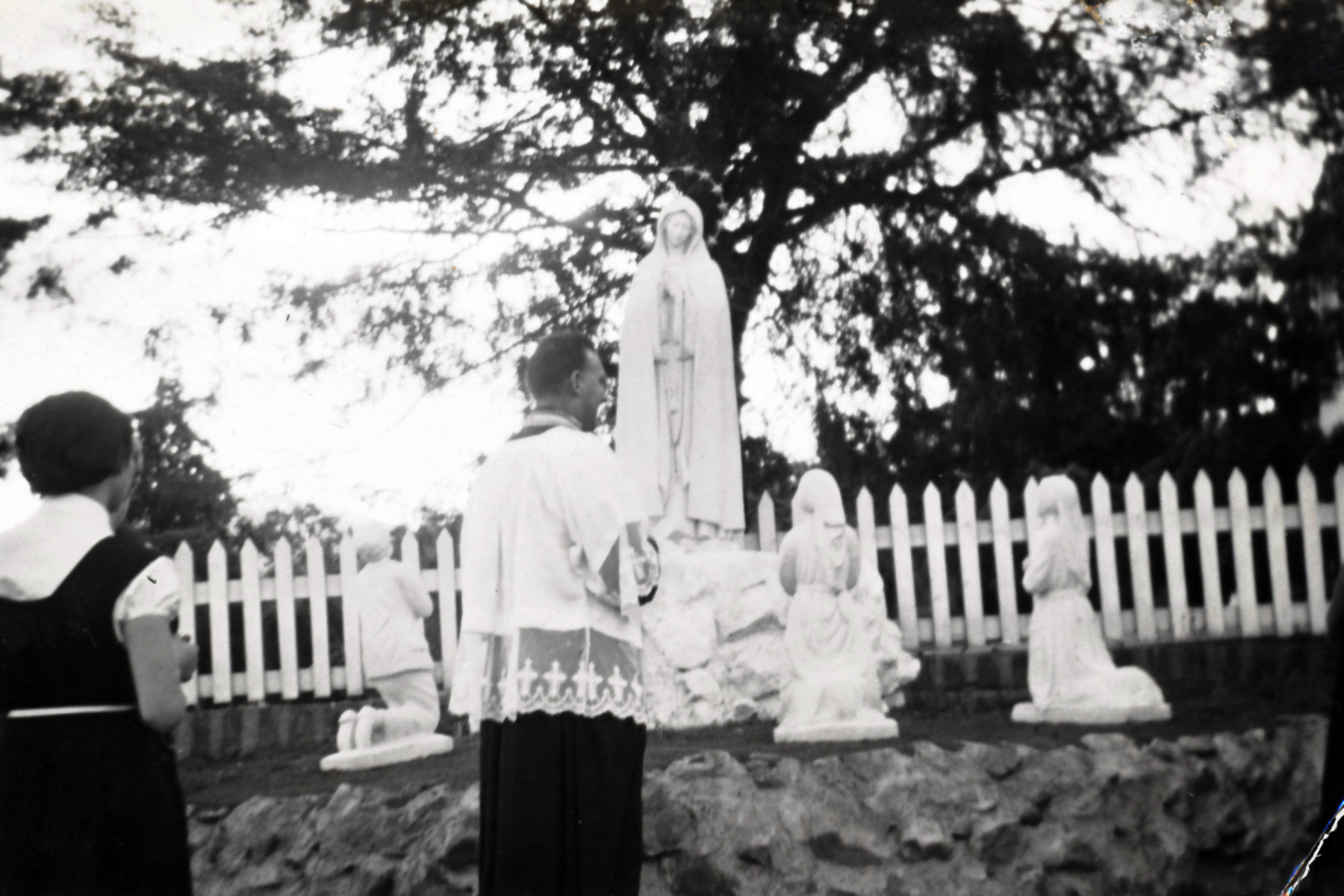 The Fatima Shrine being blessed in 1959 by Fr McKenzie.
The Fatima Shrine being blessed in 1959 by Fr McKenzie. Our Fatima Shrine today (2020),
Our Fatima Shrine today (2020),about to be renovated.
4. Shrine of Our Lady of Fatima
This particular shrine - the Fatima Shrine - recalls a deeply spiritual encounter for three children—Lucia, Francisco and Jacinta—in a small rural place, called Fatima, in Portugal in 1918. The children reported a series of spiritual appearances of a lady they believed was Mary, the Mother of Jesus. During each appearance, Mary would share with the children an important message for the whole world about peace, reconciliation and building a better world in harmony with God’s plan. There have been many miracles associated with the appearances of Mary at Fatima. For us today, this shrine can be a place for special prayer and reflection on peace, reconciliation and building a community of love.
Our Fatima shrine was built in the late 1950s inspired by a visit to MSB by the international Catholic celebrity, Fr. Patrick Peyton. Fr Peyton championed a "Rosary Crusade" around the world inspiring Catholic families all around the world to deepened their prayer life through the Rosary. This was a similar message to that of Our Lady of Fatima and so in commemoration of Fr. Peyton's visit to MSB, the Sisters had a Fatima shrine erected. In the photo, local parish priest, Fr. McKenzie, blesses the new shrine.
5. Grotto of Our Lady of Lourdes
Mother Mary Evangelist Morrissey was one of the original five Sisters of Mercy who responded to Bishop John Hutchinson’s invitation to the Sisters of Mercy in Dungarvan, Ireland, to come to Far North Queensland to administer Catholic schools for the growing population. On June 24 1888, Mother M. Evangelist, along with four other Sisters of Mercy, sailed into the Port of Cooktown and established the convent and school there. Shortly afterwards, in 1890, Mother M. Evangelist was sent to run the new St. Monica’s College in Cairns. When Mount St. Bernard College was nearing its opening, Mother M. Evangelist was then sent to Herberton and became its first principal. Mother M. Evangelist remained in the service of leadership at MSB until her death in 1950. Having so influential a role in the beginnings of our great college, she was laid to rest at the footings of the new Convent of Mercy, remaining forever a firm part of the foundations of this college.
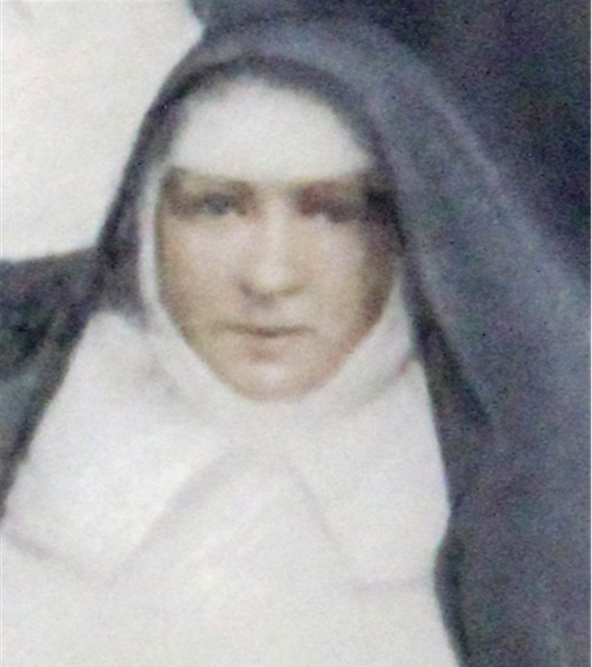
7. Convent of Our Lady of Mercy
- The tombstone of Mother Mary Evangelist Morrissey at the foot of the convent;
- The grand staircase and the pay-phone under the stairs;
- The parlour where important guests were received and where speech exams were held;
- The Study Hall where boarders would do their study each evening and where piano exams were held;
- The Dining Room where boarders would take their meals;
- Sacred Heart Dormitory (Senior Dorm) upstairs;
- The Nuns' cells (quarters) upstairs;
- The old convent chapel where the Nuns' daily prayed;
- The old convent Community Room where the Nuns would after hours let their hair down (not that any students could imagine possible!)
8. Catherine McAuley Transition House
Transition House was developed in recognition that to continue to successfully educate the changing cohort of students boarding at the college, a space for families to stay and engage in the educational journey of students was needed. Transition House provides a space where prospective students can visit with family to familiarize themselves to the college life and families can stay during visits to support students when required

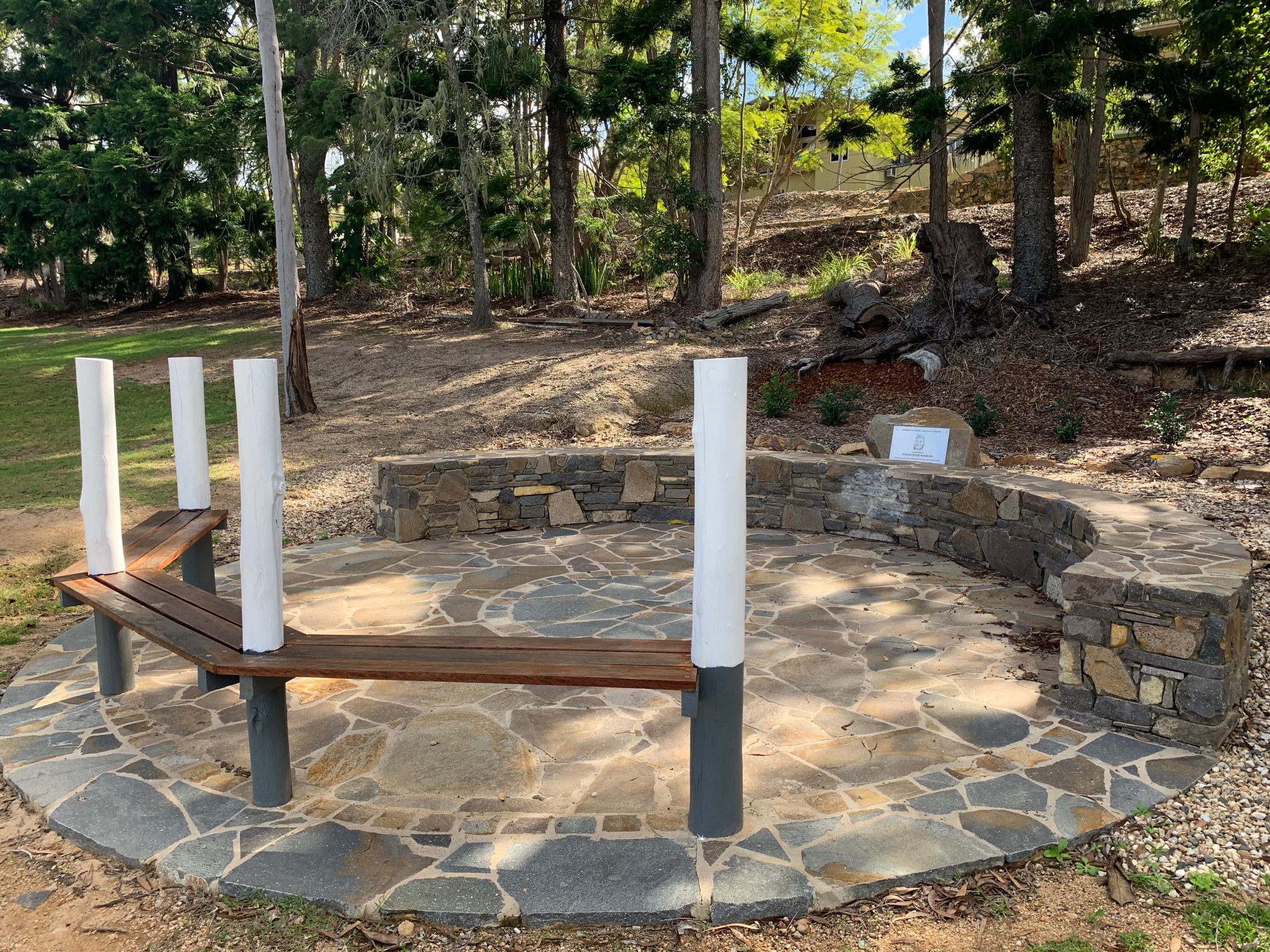
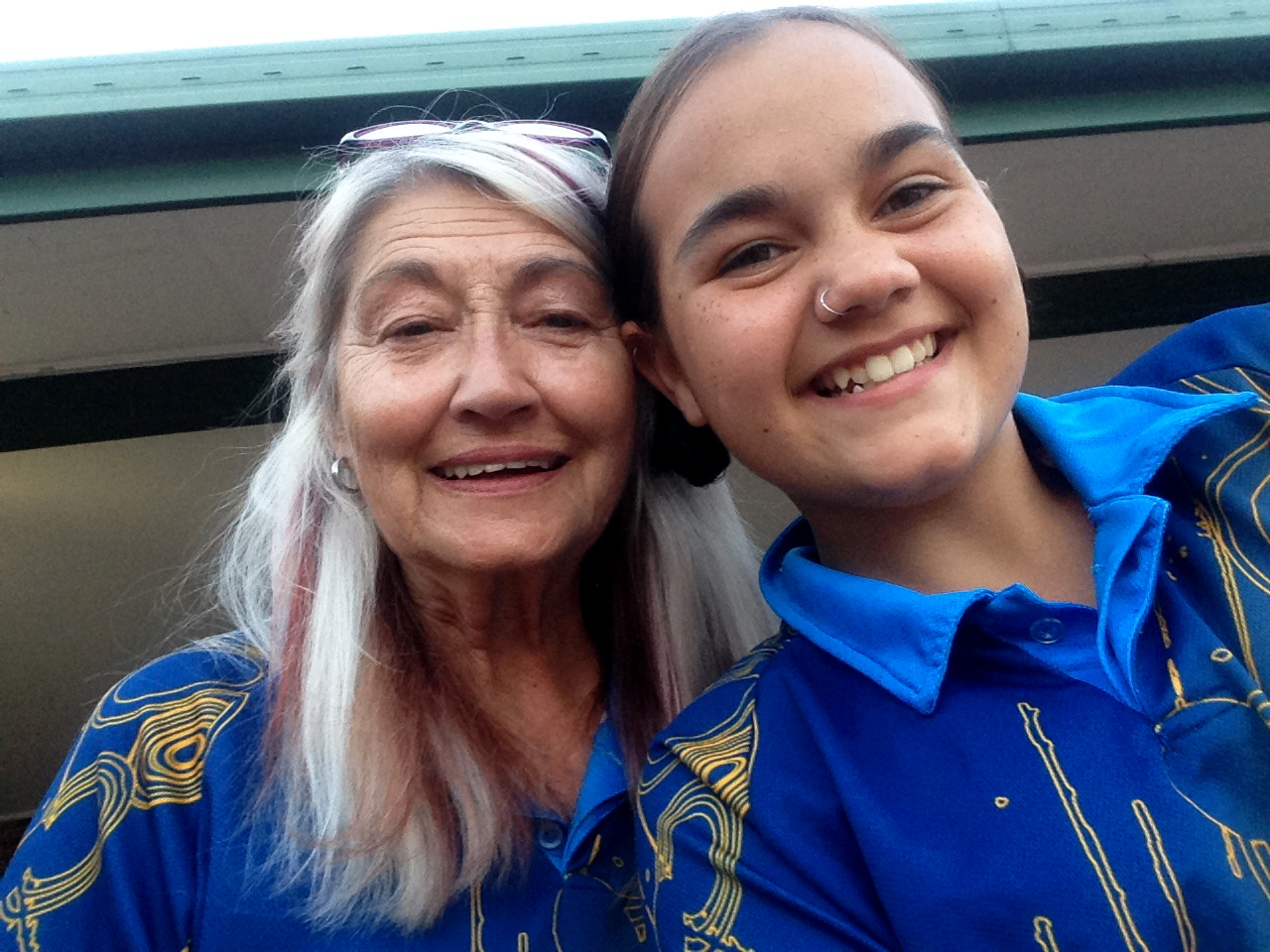
9. Yarning Circle
The Opening of the Judith Koehler Memorial Yarning Circle was unveiled on the 10th February 2020. This yarning circle was created in honour of a long serving staff member Judith Koehler who sadly passed in 2018. Known as Jude (aka: "Auntie") she was the Indigenous/Community Liaison of MSB for 15 years.
Jude was passionate with a unique ability to connect with students and their families, no matter who they were or where they were from. MSB became her second family. Her impact on this college and all she met was immense. A gentle lady with a kind heart and a true soul.
A yarning circle is a healing, harmonious, creative and collaborative way of communicating to encourage responsible, respectful and honest interactions. It is a place of contemplation, prayer and a safe space. Yarning circles are a traditional part of Aboriginal and Torres Strait Islander culture. Indigenous stories are told and passed down in a yarn around the fire smoke, this has been the Indigenous way for centuries.
The MSB yarning circle provides the perfect place to continue Jude’s legacy of connecting with students and supporting students to connect with each other. Our Yarning Circle was made possible with the financial support of the MSB P&F Association.
10. Murray McHugh Resource Centre
Built in 2011, the Resource Centre, was named in honour of two Sisters who made a significant contribution to the lives of students at the college.
Sister Pam Murray taught music at the college from 1974 to 2008. She instilled a great love of music in her students and led them to win many awards.
Sister Mary McHugh was known affectionately as Barty due to her religious name of Sr Mary Bartholomew. She spent 69 years at Mount St Bernard, caring for Sisters, students and the wider Herberton community.

11. Sisters' Cemetery & Calvary
Located on the hill overlooking Herberton, at the back of the college, the Mercy Cemetery with it’s beautiful Cavalry Cross, is the final resting place for many Sisters of Mercy who spent their lives bringing the ‘spirit of mercy’ to the Herberton community.
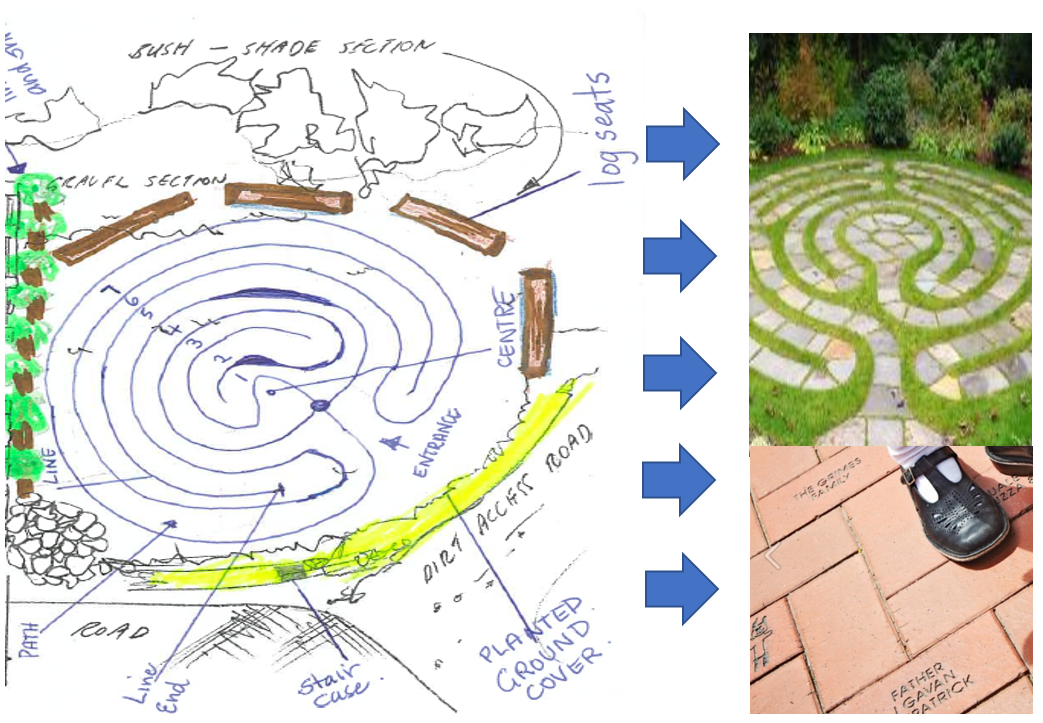
10. Centenary Labyrinth
As a centenary project, the College undertook to construct a prayer labyrinth. Praying or meditating while walking a labyrinth is an ancient practice, even pre-dating Christianity. Not unlike walking the stations of the Cross, praying the Rosary and walking on pilgrimage, praying with a labyrinth engages us through many of our senses. Touch is engaged through the walking, sight is engaged through the design of the labyrinth, hearing is engaged through the sounds of nature around the labyrinth, our minds are engaged as we journey the labyrinth, and our hearts are engaged as God speaks to us while praying the labyrinth.There are many ways to pray and the current Religious Education Curriculum introduces students to a great variety of these across different year levels. Praying with labyrinths is explicitly taught in Year 9 while every other year level requires that opportunities for meditative prayer be offered. Consequently, our Centenary Labyrinth will be quite an enrichment of the Religious Education resources of the college.
A special characteristic of our MSB Centenary Labyrinth is that we are offering the opportunity for families of MSB (past and present) to have their names permanently embossed in the bricks/pavers that make up the labyrinth. In this way, another dimension of our labyrinth will be that anyone walking it can also reflect on their part in the 100-year story of MSB.
The Centenary Labyrinth is currently still in the design phase and we hope to start minor excavations for labyrinth this year. Our goal is to officially open the Centenary Labyrinth at the Centenary Weekend (24-26 September 2021).
